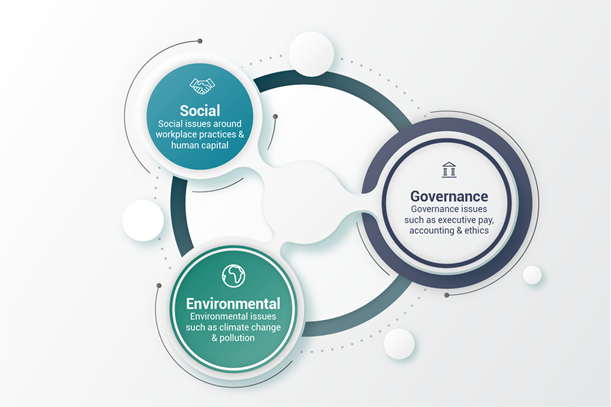Environmental, Social and Governance (ESG) criteria are performance indicators that include sustainable, ethical and corporate governance elements.
Environmental, Social and Governance in context
The philosophy behind ESG criteria is to recognise the effect companies have on the environment and society as a whole, and in turn how their policy responses can impact on their own resilience and profitability.
The corporate world is increasingly linking profitability and sustainability to ESG criteria, and the maritime industry can expect both challenges and benefits from this move.
Shipowners, operators, ports and terminals around the world, are under increasing pressure from financiers, investors, regulators and customers to produce a full disclosure of their ESG policies and performance. And the pressure is likely to increase, as players will be encouraged to develop ESG strategies advancing environmental performance, improving crew welfare and enabling more accurate reporting to support transparent ocean governance.
ESG performance is now redefining the industry and the ripple effect is being felt along supply chains, influencing supplier and customer relationships, and catalysing new commercial thinking.
So, what key value does ESG deliver? Typically, a meaningful score derived from data on specific related metrics within the company and could be considered a form of corporate social credit rating.
The maritime industry faces a wide variety of ESG risks through the entire value chain and attention should be paid to stricter ESG regulations as well as increased expectations from investors. Therefore, all companies in the industry need to understand broader ESG consequences and risks related to their own business operations.
RightShip are ESG experts in the maritime space and have an ambitious goal to create a zero-harm maritime industry. Using leading technology and data, we aim to set new benchmarks in environmental protection.
Recent trends in sustainability (or ESG performance) are now influencing decisions of all maritime stakeholders. Along with emerging contractual and regulatory requirements, the industry now needs to not only communicate, but to engage with an effective strategy towards sustainable shipping. ESG performance is now correlated to traditional shipping risks, including accidents, vessel detentions, pollution incidents and financial loss, due to fines or reputational damage.

Better ESG equals better outcomes for you
Transparent ESG reporting will provide improved access to financing, better loan terms and support a much-needed uplift in reputation as the need to combat climate change and conserve maritime ecosystems intensifies.
Maximising the value of ESG reporting and the role of digital transformation can’t be underestimated in the fast-growing ESG space. ESG reporting will evolve from simply guiding investment decisions to playing a vital role in influencing such decisions.
How RightShip can help
With a reputation for being approachable, unbiased and reliable, RightShip are well positioned to support ESG reporting for our customers in the maritime space, helping them clearly show their stance on ESG, and the progress they've made. We cover various relevant ESG elements through our GHG rating and Carbon Accounting tools, that include the following:
On the ENVIRONMENTAL side, for example, increasingly stricter requirements related to emissions from ships pose a growing risk.
A focus has been put on SOCIAL risks in areas of crew welfare as well as health and safety on board given that breach of labour rights is a high-risk element.
Shipping, as an industry, is vulnerable to GOVERNANCE risks related to corruption, ethics and integrity.
We can help you improve your sustainability management by effectively communicating ESG impacts and formulating sustainability strategies, tracking proven progress and supporting you through your sustainability journey. This allows you to be transparent about the risks and opportunities faced, with a platform to share your story, values and goals.
Our robust suite of products supports shipowners, charterers, ports and terminals, financial and insurance sector players in tracking and benchmarking emissions performance, crew welfare and operational efficiency.
Conclusion
As internal and external stakeholders demand clear and transparent information in this area, ESG reporting will need to go beyond just showcasing numbers and evolve into a cohesive story that incorporates elements like demonstrated efforts in workplace safety, supporting local communities, social responsibility, responsible sourcing and meaningfully reducing carbon footprints, among others.
